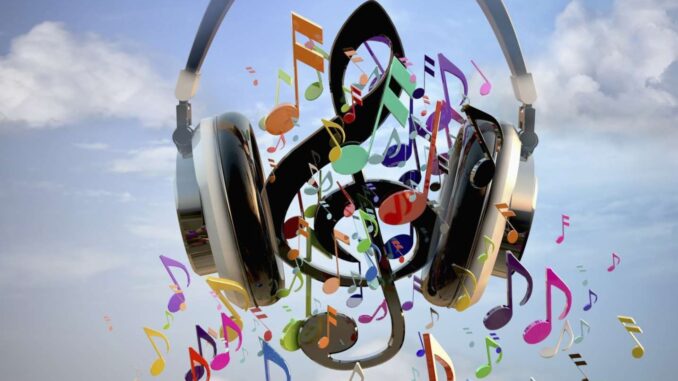
Difference Between Popular Music and Pop Music
Music serves as a universal form of communication, bringing people together across different cultures and generations. However, certain terms in the music industry can be confusing, such as “popular music” and “pop music.” While they may seem similar, these two terms refer to different concepts. This article explores the difference between popular music and pop music, highlighting their characteristics, history, influences, and impact on the music industry.
What is Popular Music?
Popular music is a broad term that refers to any music that is widely enjoyed by a large audience. It encompasses multiple genres and styles, including rock, jazz, R&B, hip-hop, country, and pop music itself. The defining characteristic of popular music is its mass appeal rather than adherence to a specific genre or sound.
Characteristics of Popular Music
Wide Audience: Popular music is consumed by a broad demographic and reaches mainstream listeners.
Diverse Genres: It includes various music styles such as rock, country, hip-hop, and electronic dance music.
Commercial Success: Popular music is often chart-topping and widely sold through records, streaming platforms, and concerts.
Cultural Influence: It reflects social trends, political movements, and generational changes.
Accessible Sound: Popular music is often designed to be easily understood and appreciated by a broad audience.
Global Reach: Popular music can cross borders, influencing different cultures and musical traditions.
History and Evolution of Popular Music
Popular music has evolved over centuries, with each era contributing to its diversity. Some significant moments in its history include:
19th Century: The rise of sheet music and public performances increased music consumption.
1920s-1940s: Jazz and blues became dominant, influencing global music trends.
1950s-1970s: Rock and roll, folk, and R&B became mainstream.
1980s-Present: Pop, hip-hop, and electronic music continue to shape popular music.
Digital Age (2000s-Present): Streaming platforms and digital production have reshaped how music is distributed and consumed.
What is Pop Music?
Pop music is a particular genre within popular music. It is characterized by its catchy melodies, simple lyrics, and commercial production. While pop music is a part of popular music, not all popular music is considered pop music.
Characteristics of Pop Music
Catchy Melodies: Pop songs often feature memorable hooks and repetitive structures.
Simple Lyrics: The lyrics focus on universal themes like love, relationships, and happiness.
Upbeat Tempo: Most pop songs have an energetic and danceable rhythm.
Production Techniques: Pop music relies on advanced studio techniques and electronic instruments.
Mainstream Appeal: Pop music is crafted to attract a mass audience and gain radio play.
Versatility: While pop music has a distinct sound, it often incorporates elements from other genres such as R&B, electronic, and hip-hop.
History and Evolution of Pop Music
Pop music emerged in the mid-20th century and has continually evolved:
1950s-1960s: The Beatles and Elvis Presley pioneered early pop music with rock and roll influences.
1970s-1980s: Disco, synth-pop, and new wave dominated the pop music scene.
1990s-2000s: Boy bands, pop divas, and R&B-infused pop became mainstream.
2010s-Present: Electronic, indie, and K-pop have expanded the genre’s reach.
Modern Trends: Today’s pop music integrates digital effects, auto-tune, and streaming-driven production.
Key Differences Between Popular Music and Pop Music
Definition: Popular Music Encompasses all widely enjoyed music genres while Pop Music is a specific genre focused on catchy, commercially produced songs.
Variety: Popular Music Includes rock, jazz, country, R&B, etc while Pop Music Primarily consists of mainstream, radio-friendly songs.
Evolution: Popular Music Changes with cultural and social trends while the other Adapts to commercial demands and industry trends.
Musical Structure: Popular Music Can be complex and diverse while Pop Music Typically follows verse-chorus-verse patterns.
Audience: Popular Music Broad audience with diverse tastes while the other Primarily targets mainstream listeners.
Instrumentation: Popular Music Varies by genre (guitars, synths, drums) while Pop Music Often uses electronic production and polished studio techniques.
Cultural Impact: Popular Music Reflects different societal changes while the other Focuses on entertainment and mainstream appeal.
Influence and Impact of Both Categories
Popular Music’s Influence
Popular music has played a crucial role in reflecting societal changes and influencing global culture. It has contributed to major political movements, such as civil rights activism in the 1960s and feminist movements in the 2000s. Additionally, it provides an avenue for social expression and innovation in musical artistry.
Pop Music’s Influence
Pop music dominates mainstream media, shaping fashion, dance trends, and social media culture. Artists like Michael Jackson, Madonna, and Taylor Swift have made lasting impacts on entertainment and youth culture. Pop music is also heavily tied to marketing strategies, with artists often becoming global brands.
The Role of Digital Media
Both music have seen a transformation due to digital technology. Streaming services like Spotify, Apple Music, and YouTube have reshaped how music reaches audiences. Pop music benefits from algorithmic promotion, while the other, in general, has diversified with independent artists finding success through social media.
Future Trends
AI-Generated Music: AI tools are increasingly being used to create and produce music.
Global Fusion: Artists are blending different cultural sounds, making pop music more internationally influenced.
Sustainability in Music Production: The industry is becoming more conscious of environmental impacts related to production and live performances.
Fan Interaction: Social media and digital experiences allow fans to engage with their favorite artists in new ways.
Conclusion
While “popular music” and “pop music” are often used interchangeably, they represent different aspects of the music industry. Popular music is an umbrella term that includes various genres, while pop music is a specific, commercially-driven genre. Understanding the difference helps music lovers appreciate the diversity of sounds that shape the industry. Whether you prefer rock, hip-hop, or pop, music remains an integral part of human expression and cultural evolution. As technology and social changes continue to influence music, both music will keep evolving, offering fresh and exciting experiences for listeners worldwide.
Stay updated with more information here!
Watch music videos here.
Leave a Reply